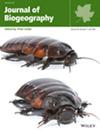Functional Signatures of Surface Pollen and Vegetation Are Broadly Similar: Good News for Past Reconstructions of Vegetation
Abstract
Aim
Pollen assemblages are widely used to infer paleoenvironment features, aiming at reconstructing both past climates and biomes. However, the functional link between environmental conditions and pollen assemblages is not straightforward and requires thorough testing to be used confidently. Here, we use a trait-based approach to assess the consistency of functional signatures between pollen and plant assemblages.
Location
Arid Central Asia (ACA).
Taxon
Spermatophytes (pollen-producing plants).
Methods
We assess whether trait values and trait distributions are consistent for surface pollen samples and extant vegetation in the Arid Central Asia biogeographic region. A working plant checklist was compiled for ACA in order to assign trait values to pollen types and vegetation taxa. This was done for two widely used methods of pollen aggregation schemes (coarse and fine pollen type depend on the level of pollen identification). The functional signatures of pollen and vegetation samples were compared both at the taxon and community levels, using large-scale trait and vegetation databases, for the six traits of the global spectrum of plant form and function (i.e., plant height, seed mass, leaf area, specific leaf area, nitrogen content per leaf mass, and stem-specific density).
Results
Trait distributions and bivariate trait relationships were broadly similar for pollen types and vegetation taxa, which is also the case for the multivariate spaces of the global spectrum of plant form and function. At the community scale, the trait values weighted by taxon abundance significantly differed among biomes, and these differences were consistent for both pollen aggregation schemes and extant.
Main Conclusions
The pollen aggregation scheme does not impact the organisation of the functional space of the global spectrum of plant form and function, which compares well with that based on species actually present in the vegetation plots. This is also true at the community scale. These findings are very promising for improving climate and biome reconstructions from pollen assemblages and pave the way to a “pollen functional biogeography”.


 求助内容:
求助内容: 应助结果提醒方式:
应助结果提醒方式:


